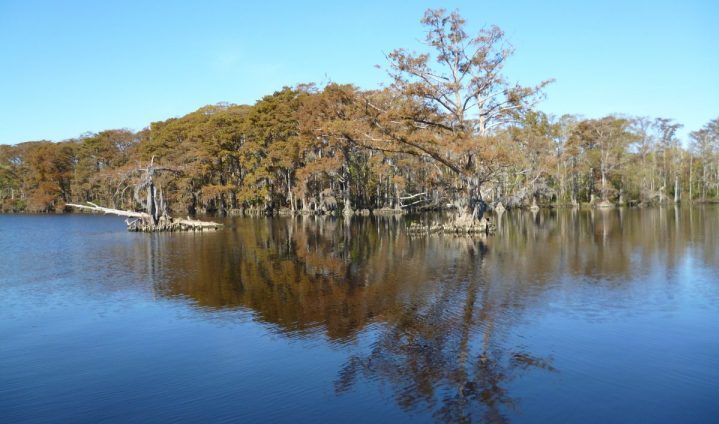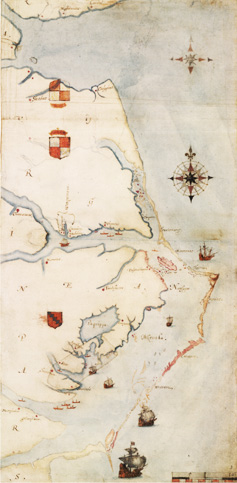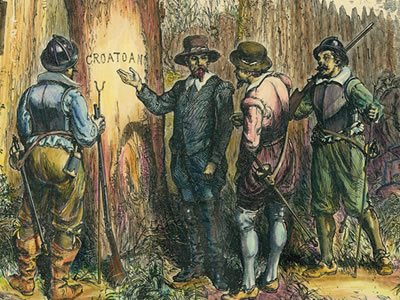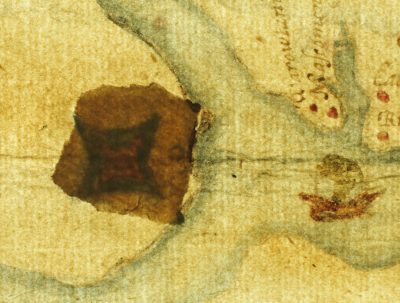
BERTIE COUNTY — It’s not often that pre-Colonial American history and an environmental paradise in northeastern North Carolina are conserved in one fell swoop.
In an announcement last month, the nonprofit North Carolina Coastal Land Trust exulted over its purchase in Bertie County of nearly 1,000 acres of waterfront, marsh and forested land. The deal secures an important archaeological site that has unearthed 16th-century artifacts that could be evidence of stragglers from the well-known Lost Colony on Roanoke Island.
Supporter Spotlight
Located at the confluence of the Chowan River and the Albemarle Sound, the property also includes 3.5 miles of Salmon Creek frontage, cypress-gum swamp and bottomland forest and tidal freshwater marsh designated as ecologically significant by the North Carolina Natural Heritage Program.

“This is the most ambitious and exciting project in the Coastal Land Trust’s history,” executive director Camilla Herlevich said in a press release.
For the first time, the Land Trust took loans for the total $4.85 million cost, which was below market value, Lee Leidy, attorney and northeast region director, said in an interview. Using grants and donations, she added, the loan is expected to be paid off by 2018.
Once funds are raised to cover the loan, the property will be transferred to the state and become Salmon Creek Natural Area. Creation of the area, currently closed to the public, was authorized by a bill the North Carolina General Assembly passed this summer.
With the window of opportunity to preserve an ecologically important ecosystem from development, coupled with the combined historic and cultural assets of the property, Land Trust officials knew they needed to act quickly. Bertie County, one of the state’s poorest counties and underserved in the state park system, would also stand to benefit with ecotourism revenue and outdoor recreational offerings.
Supporter Spotlight
“It’s just the whole package,” Leidy said. “It’s just magnificent. We’re so excited about it.”
The significance of the archaeological work done on a nearly 13-acre tract of the property lends historic intrigue to the land purchase. Artifacts discovered at the site include, among others, remnants of pottery from 16th-century English Border ware, leading archaeologists to hypothesize that some of the Roanoke colonists had lived there for a period of time.
With a cryptic name more suitable to a 1960s sci-fi movie, Site X, as it was later named, was initially discovered by happenstance when archaeologist Nick Luccketti, principal investigator with the James River Institute for Archaeology, did survey work in 2007 as preparation for a 2,800-unit development and a 212-slip marina planned by Michael Flannelly, one of the property owners.
At first, a lot of Native American artifacts were discovered, Luccketti explained in a telephone interview. But in a second survey, European artifacts that appeared to be 17th century were also unearthed. Since the area was also the site of the homes of Gov. Nathaniel Batts, of the mid-1600s, and Gov. Thomas Pollock, of the late 1600s and early 1700s, Luccketti said he attributed the finds to their presence. But later examination of some of the pottery shards revealed that they could be traced back to the late 16th century English – meaning, potentially, some of the Lost Colonists.

In addition to his job at the Institute, Luccketti is one of the founders of The First Colony Foundation, a nonprofit group established in 2004 by professional veteran archeologists and historians focused on the 1584-87 Roanoke Voyages.
Led by Sir Walter Raleigh from his base in England, the voyages sent English explorers to the northeastern North Carolina and southeastern Virginia coasts, culminating with the failed settlement of 117 men, women and children at Roanoke Island in 1587. After Gov. John White, also the voyages’ artist and mapmaker, left for supplies in August of that year, his return was delayed by war until 1590. To his horror, he found that the settlers – who included his daughter and granddaughter – had disappeared without a trace. The fate of the colony remains one of the oldest unsolved mysteries in Colonial history.
One clue in particular has intrigued numerous archaeologists in their searches: White said the colonists agreed to travel “50 miles into the maine” if they left. The Bertie County “Site X” that colonists learned of from friendly Indians is about 50 miles into the mainland from Roanoke Island.
“It was a decent place to live 400 years ago, when the sea level was lower,” Luccketti said. “This place was higher and drier. It doesn’t look like an area you would select to settle down at now.”
Numerous excavations by archaeologists with the National Park Service and its charitable partner, the nonprofit National Park Foundation, at Fort Raleigh National Historic Site on the north end Roanoke Island, where the colonists were originally thought to have settled, have revealed evidence of a metallurgy shop, and some English artifacts, but so far, little more. The foundation is planning further digs on Roanoke Island this fall, and hopes in the near future to explore more areas along the Chowan River and Albemarle Sound.
Luccketti, who was a member of the team that rediscovered Jamestown’s fort in 1996, said that further interest in the Salmon Creek site was spurred when a foundation member noticed a mysterious patch over a fort symbol on White’s “La Virginea Pars” map. To their amazement, the patch was at the same area near where Luccketti had earlier found English artifacts.

“The serendipity of it all is how the map brought us back to Site X,” he said.
With Luccketti leading the excavations, the foundation conducted up to 10 days of fieldwork, including use of ground-penetrating radar, at the site every year from 2012 through 2017. The findings, he said, indicate that a half-dozen or so colonists may have stayed at the site for as few as two years and as long as 10 years.
“It seems reasonable that they did have to split up to survive,” he said. “This was in the middle of the worst drought in 800 years.
Details about the Site X artifacts are to be revealed during a symposium in late October in Manteo, Luccketti said. An archaeological report is expected to be published by year’s end.
Considering that archaeologists often contend with development marring important sites, Luccketti said he was pleased that conservation of Site X and the surrounding land by the Coastal Land Trust will not only preserve important Native American and Colonial sites, it will ensure protection of land that may provide a critical clue to the fate of the nation’s earliest settlers.
“I couldn’t think of a better outcome,” Luccketti said.
Learn More
- For more information about Site X, contact the Coastal Land Trust at 910-790-4524 ext 206 or email Camilla@CoastalLandTrust.org.
- To support the Site X project, donate online.
- First Colony Foundation







